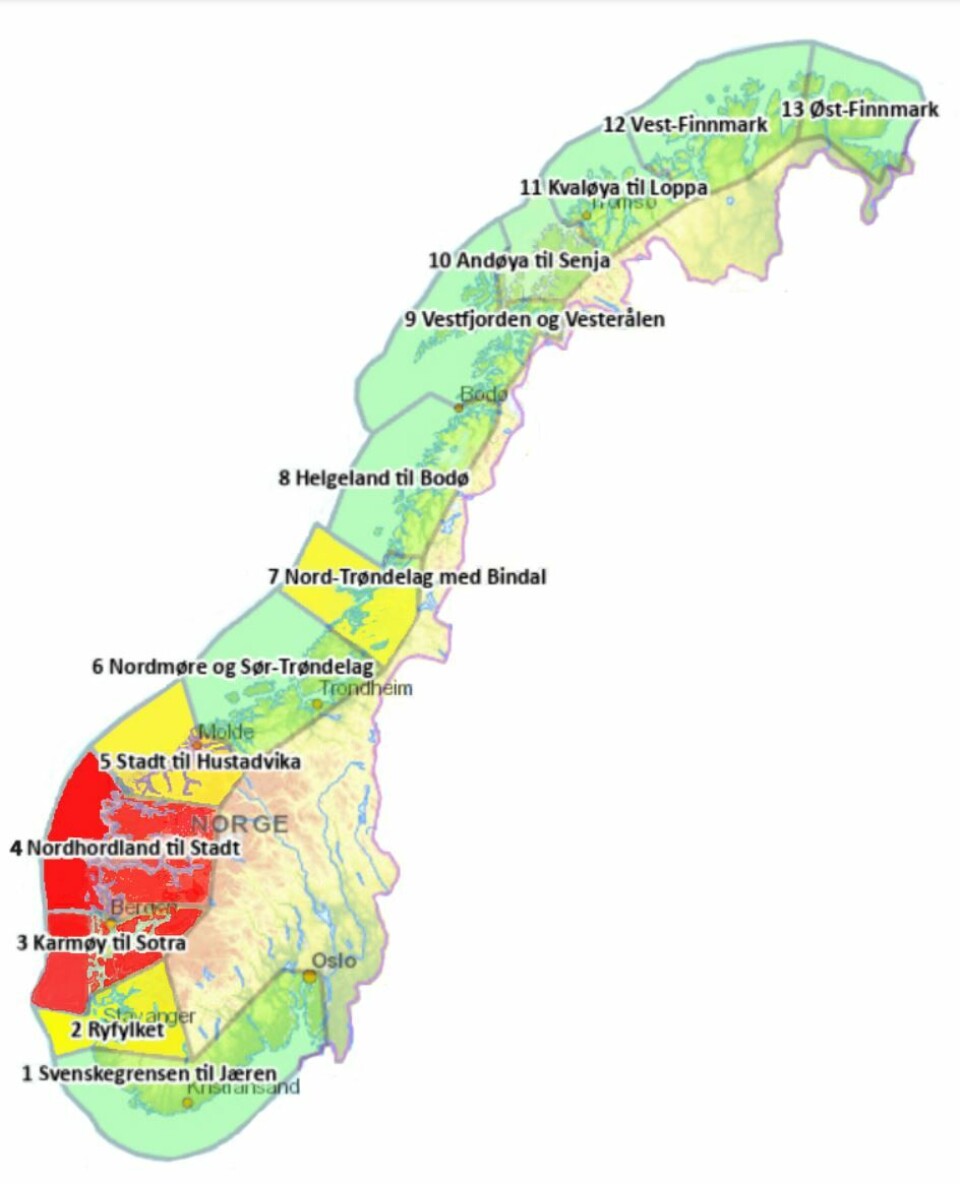
Norway gives green light for production increase
The world’s biggest salmon farmer, Norway, has given the go-ahead for an increase of just over 21,000 tonnes of farmed salmon and trout production as part of its biennial “traffic light system” adjustments.
The system categorises the country’s 13 salmonid production areas as green, yellow or red, depending on the impact that sea lice from net pens are assessed to have on migrating wild salmon. Green areas can increase production by up to 6%, yellow areas stay the same, and red areas must reduce capacity by 6%.
The Ministry of Trade and Industry has declared that biomass can be increased in eight areas, maintained at current levels in three areas, and reduced in two areas.

More jobs, more food
Production in the green areas will potentially increase by around 33,000 tonnes, whereas production in the red areas will fall by an estimated 11,700 tonnes. However, the real reduction may be somewhat lower, depending on how much production capacity is exempted from downsizing under exemption rules.
“We are now ensuring further growth in the areas where the impact of salmon lice on wild salmon is acceptable. It will facilitate further growth to create more jobs, more Norwegian food production, greater value creation and increased export revenues for Norway,” said fisheries and marine affairs minister Bjørnar Skjæran in a press release.
“At the same time, we take the wild salmon into account seriously by reducing production capacity where the impact is unacceptable.”
PO4 hit again
The two production areas (PO’s) that get a red light are Karmøy to Sotra (PO3) and Nordhordland to Stadt (PO4). This is the second time PO4 has had its production capacity reduced.
“The impact of lice is still greatest in Western Norway, and here the industry must take action to ensure that the impact is not only reduced as a result of downsizing, but also through operational improvements,” said Skjæran.
The previous red-light designation was challenged by all 25 salmon and trout farmers operating in PO4, including Mowi, which has 19 farms in the affected area, and Scottish Sea Farms co-owner Lerøy, which has 10.
The farmers lost their case in the district court, and in the appeal court, but have now taken the case to the supreme court.
NOK 200,000 per tonne
In the green areas, 6% of extra biomass capacity will be sold to farmers by the government in two rounds: 1% at a fixed price, and then the remaining 5% through auction.
The fixed price capacity is for growth in permits which farmers already have and is priced at NOK 200,000 (approx. £16,900) per tonne.
The rest, including what is not sold at a fixed price in green areas, is allocated through an auction of new permits after the summer.
The expected volume increase of around 21,300 tonnes equates to about 1.5% of Norway’s annual production. In 2020, Norway produced 1,369,100 tonnes (whole fish equivalent) of Atlantic salmon, and 92,500 tonnes wfe of ocean-farmed trout, according to analyst Kontali.






















































